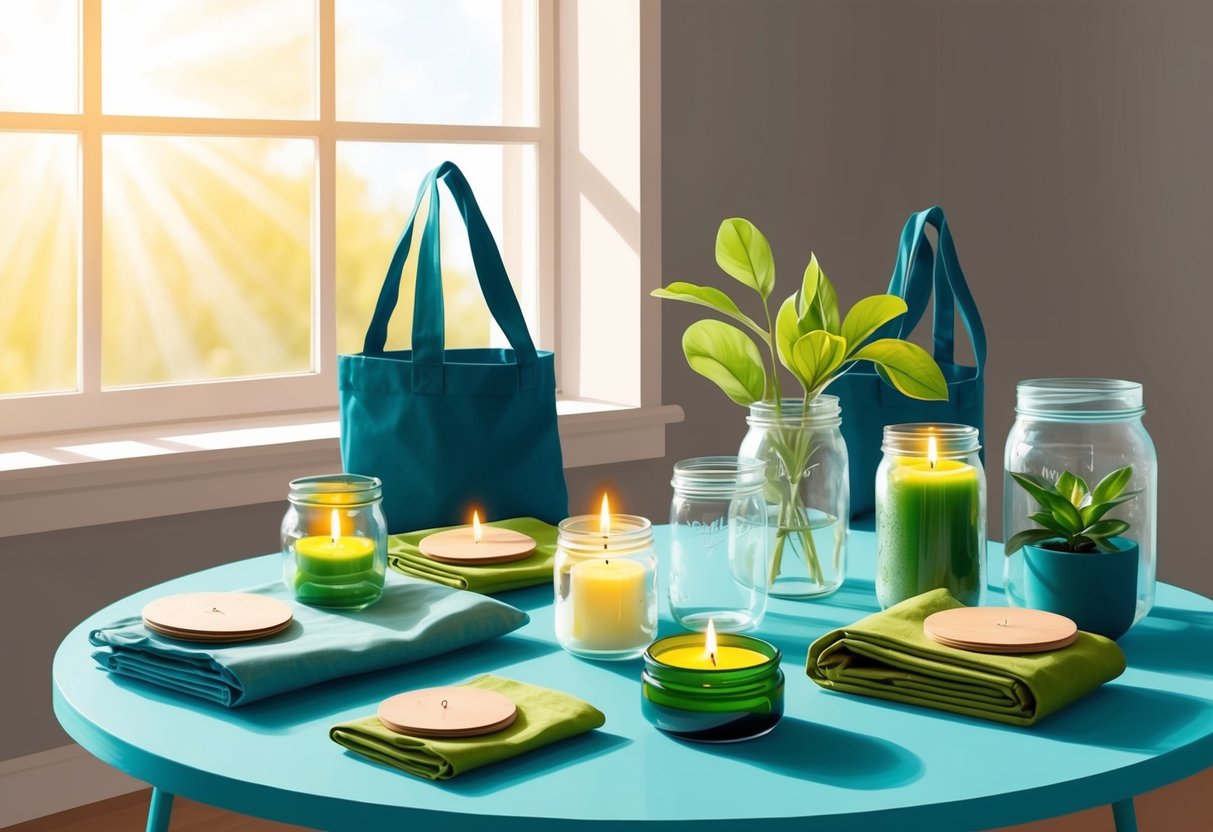
Where and How to Sell Your Eco-Friendly Crafts
Eco-friendly crafts can attract different audiences depending on the sales channel chosen. Sellers should consider platform strengths, presentation, and audience preferences to maximize profit and exposure.
Selling on Etsy and eBay
Etsy and eBay both allow sellers to reach global audiences, but their approaches differ. Etsy specializes in handmade, vintage, and eco-friendly crafts, so it attracts buyers seeking unique sustainable items.
Listings with detailed descriptions, clear photos, and eco-conscious keywords help sellers stand out. Key features include customizable shipping profiles for recycled packaging and shop sections dedicated to zero waste or upcycled goods.
eBay supports both auctions and fixed-price sales, offering flexibility for those who create limited runs or one-of-a-kind items. Eco-friendly crafters should highlight environmentally friendly materials by using terms like “biodegradable,” “recycled,” and “organic.”
Offering combined shipping and using minimal packaging can boost positive feedback. Sellers should monitor trending products by searching “handmade eco crafts” to adjust their inventory for better sales performance.
Success at Craft Fairs and Local Markets
Craft fairs and local markets provide immediate feedback and personal interaction, helping build customer trust quickly. Sellers can use sustainable display materials, such as reclaimed wood tables or recycled signage, to reinforce their eco-friendly branding.
Offering sample packs or mini kits lets shoppers try items at a lower price point, appealing to impulse buyers. Location selection matters: events in environmentally conscious communities, farmers markets, and green festivals usually draw customers interested in sustainable products.
Sellers should keep business cards, eco-friendly packaging, and reusable bags on hand for customers. Personal branding—such as a sign stating “Handmade From Reused Materials”—makes items more memorable and sparks conversations.
Effective Ways to Sell Online
In addition to major marketplaces, there are many websites for selling crafts and handmade products online. Sellers can use their own websites, social media shops, or platforms focused on eco-conscious audiences.
High-quality photos and SEO-optimized product descriptions improve visibility and trust. Utilizing social media allows for direct engagement and promotion using hashtags like #SustainableCrafts or #EcoFriendlyGifts.
Platforms such as Shopify make it possible to showcase green packaging options, discounts for repeat customers, or limited-edition releases. Free guides, care tips, or upcycling tutorials can add value, encourage sharing, and increase sales.
Payment options, shipping calculators, and easy return policies help reduce barriers for buyers looking for eco-friendly craft gifts.
Frequently Asked Questions
Eco-friendly crafts combine creative techniques with sustainable, natural, or recycled materials. Sellers must consider material selection, current trends, marketing strategies, and legal guidelines to maximize their earning potential in today’s marketplace.
What are the top-selling eco-friendly crafts I can create for extra income?
Handmade products using sustainable or recycled materials often draw steady demand. Some of the best-selling items include upcycled home décor, reusable shopping bags and beeswax wraps, and handmade beauty products such as soaps and lip balms.
Personalized eco-friendly stationery, such as notebooks and greeting cards, also appeals to buyers who want unique, planet-friendly gifts. Explore more ideas for trending crafts to make and sell at platforms like Shopify’s list of profitable crafts.
How do I identify eco-friendly materials for crafting products to sell?
Materials that are biodegradable, compostable, recycled, or come from renewable sources qualify as eco-friendly. Examples include natural fibers such as cotton, hemp, and bamboo, as well as upcycled wood, cardboard, and glass.
Certification labels, such as FSC for wood or GOTS for textiles, help verify sustainability. Researching suppliers and their environmental policies is key to maintaining eco-conscious standards.
What are the latest trends in eco-friendly crafts that have a high demand in the market?
Recent trends focus on reusable everyday products like fabric snack bags, shopping totes, and zero-waste kitchen items. Upcycling—transforming old items into new, functional art—is gaining momentum, especially with a surge in DIY eco-conscious décor.
Interest is also increasing in customizable natural beauty items, including bath bombs and solid shampoo bars, as highlighted in articles on profitable crafts to sell.
Are there specific legal requirements for selling handmade eco-friendly crafts?
Regulations vary by location and product type. For example, handmade cosmetics need to follow health and safety standards, including proper labeling and ingredient disclosures.
Sellers may need a local business license or must collect sales tax. It is advised to research state or provincial regulations and consult official small business resources for compliance.
Which eco-friendly crafts can be made at a low cost and still yield a significant profit?
Upcycled crafts made from reclaimed fabric, jars, or paper scraps generally require very little startup capital. Reusable items, including cloth napkins, market totes, and beeswax wraps, are cost-effective and in demand.
Handmade paper greeting cards or journals can be produced inexpensively using recycled materials but often sell at a premium, appealing to mindful shoppers interested in sustainable stationery.
How can I market my eco-friendly craft products effectively to attract buyers?
Social media platforms and visual marketplaces, such as Instagram, Etsy, and Pinterest, help showcase unique eco-friendly crafts to a large audience.
Storytelling about sustainable materials and production processes boosts engagement.
Partnering with eco-focused influencers can drive attention.
Attending local green markets also helps businesses committed to ethical practices reach more buyers.



